Panchamrit Recipe | How To Make Panchamrut
Panchamrit, also called Panchamrut, is a Sanskrit word made up of two words – panch and amrit. Panch refers to five and amrit means nectar. It is a sacred preparation offered to deities during Hindu rituals and festivals. In this post, I share a simple Panchamrit Recipe that you can easily make at home. This traditional mixture made with five sacred ingredients such as milk, curd (yogurt), ghee, honey and jaggery or sugar is easy, pure and quick to prepare.
Meaning & Significance of Panchamrit
Panchamrit, a revered offering in Hindu rituals, is a traditional prasad (sacred food) prepared with five key ingredients symbolizing purity and devotion.
This sacred mixture is an important part of many religious ceremonies, especially in temples dedicated to Bhagwan Krishna and Bhagwan Shiva.
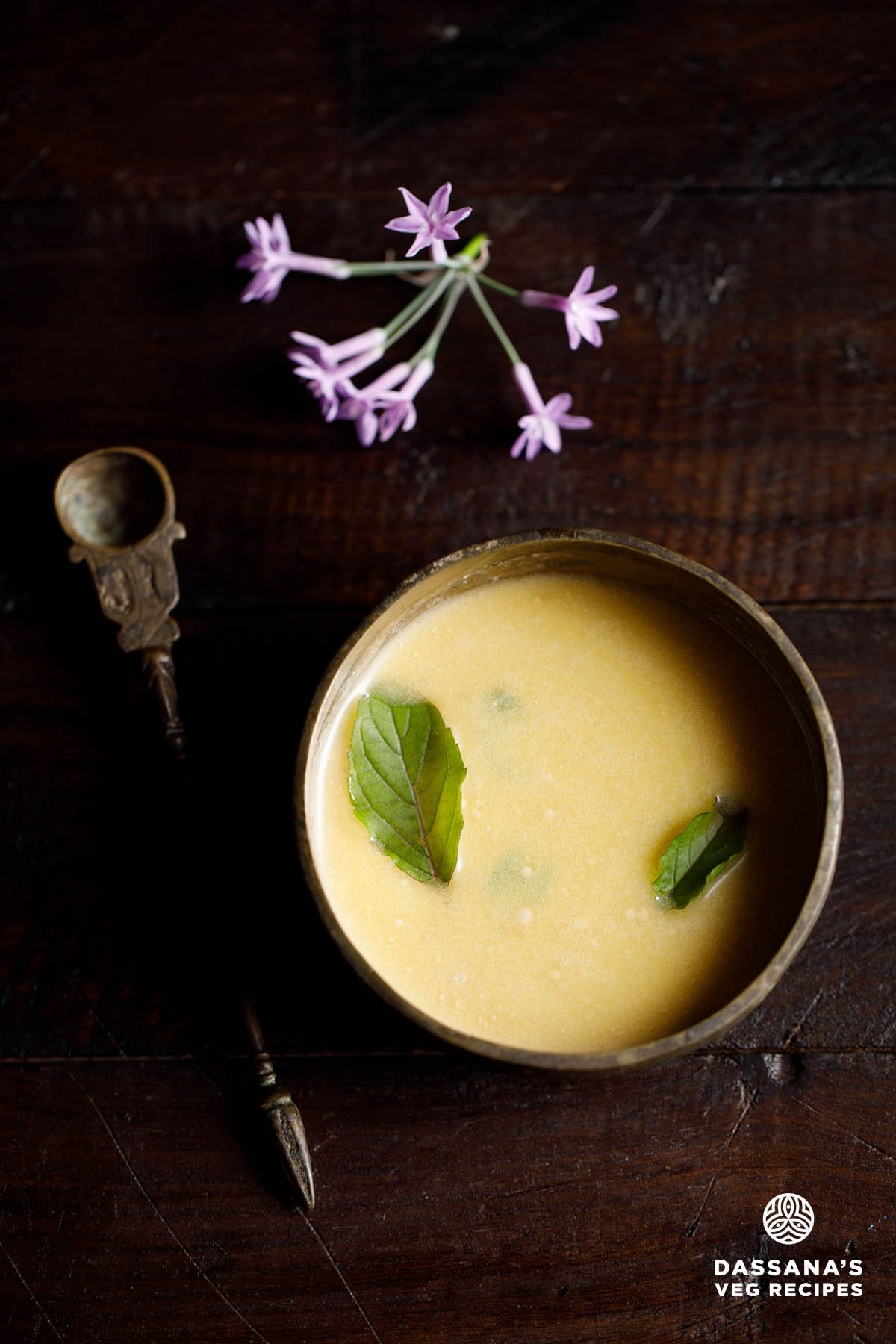
It is believed to purify the mind, body, and soul and is regarded as a sacred blessing when shared as prasad.
Panchamrut is often used during abhishekams (ritual bathing of the deity) and is later distributed as prasad after the puja. It is also known as Charanamrit, meaning the sacred liquid that washes the feet of the deity.
Five Traditional Ingredients
The five essential ingredients of Panchamrit are:
- Milk: signifies purity, auspiciousness, and nurturing qualities.
- Curd (Yogurt): denotes prosperity, fertility, and well-being.
- Honey: represents unity and sweetness; the gentle balance among the other elements.
- Ghee (Clarified butter): stands for strength, energy, and sacredness.
- Jaggery or Sugar: embodies bliss, sweetness, and harmony.
These meanings come from Hindu tradition and can vary by region or temple. Each ingredient is considered pure and represents the balance and harmony found in nature. Together, they make a sacred mixture that is both nourishing and symbolic.
Traditionally, only these five ingredients along with Ganga jal (holy water) are used. But in some regions and temples, bananas or Makhana (Foxnuts) are also added. I’ve had this version once in a temple and found it quite nice.
At home, I always use jaggery when making this dish. If you prefer sugar, then choose unbleached or unrefined sugar (raw sugar).
Each ingredient has its own symbolic and nutritional value. They are simply mixed together to form a balanced and sacred mixture.
Type of Milk Used for Panchamrit
Traditionally, raw milk is used in Panchamrit made for abhishekam or deity bathing, as it is considered ritually pure and symbolic. However, for Panchamrut that will be consumed as prasad, it is safer to use milk that has been boiled and cooled to room temperature.
If raw milk is used, it should always be boiled first. Pasteurized milk can also be boiled once and then cooled before mixing with the other ingredients.
Panchamrit vs Panchamrutham
The North Indian Panchamrit differs from the South Indian Panchamrutham in taste and ingredients. The North Indian version is simpler and made mainly with the five traditional ingredients listed above.
In contrast, the South Indian Panchamrutham is richer and fruit-based, often prepared with bananas, dry fruits, and jaggery. I’ve shared the South Indian variation below after the stepwise photo instructions for you to try, if you like.
How I Make It
When preparing Panchamrit for festivals like Ganesh Chaturthi, Diwali, Janmashtami, or Maha Shivratri, I usually make it by approximation, adding everything directly to a small bowl.
For the blog, I measured the ingredients to make it easier for you to follow. This dish is offered to deities during any puja or festival and later shared as prasad. As I have mentioned above, in many homes and temples, abhishekam is also done with Panchamrut.
This sacred and traditional drink is more than a ritual offering. It reflects purity, simplicity, and nourishment, connecting faith with everyday well-being.
You may also like these sweets made for pooja and festivals:
How to make Panchamrit Recipe
1. In a small bowl, take 2 tablespoons curd (yogurt). Beat it well with a spoon until smooth and lump-free.
Tip: Make sure the curd is fresh and not sour. If it’s slightly thick, you can whisk it with a teaspoon of milk.
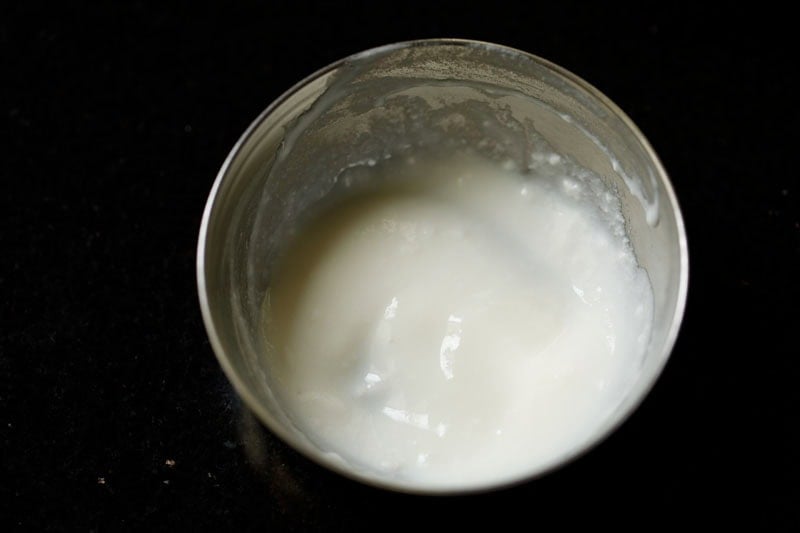
2. In another bowl, take ¼ cup milk. The milk should be boiled first, cooled completely, and then used. It must be at room temperature, not hot or warm.
You can use raw milk if it is boiled and cooled, or pasteurized milk that has been boiled once and cooled before use.
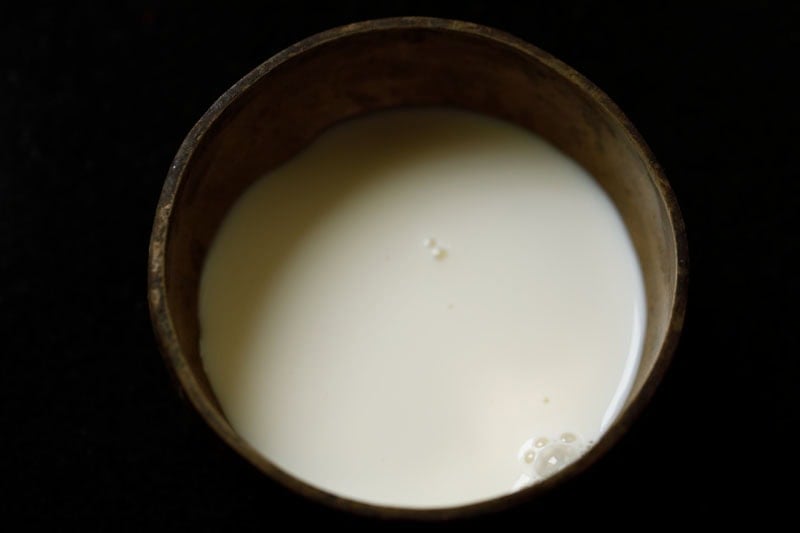
3. Add the beaten curd to the milk and mix gently.
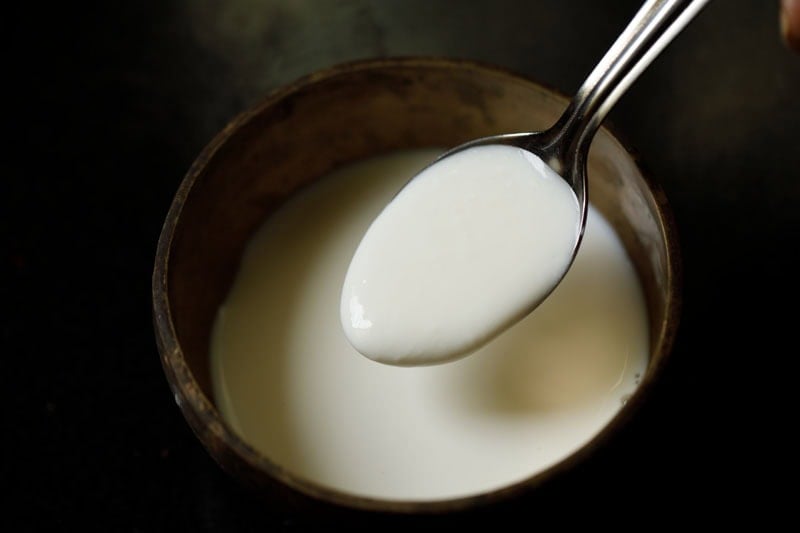
4. Next, add 1 tablespoon honey.
Note: Always add honey to cooled milk. Never mix honey in hot milk or liquids as it is considered unhealthy in Ayurveda.
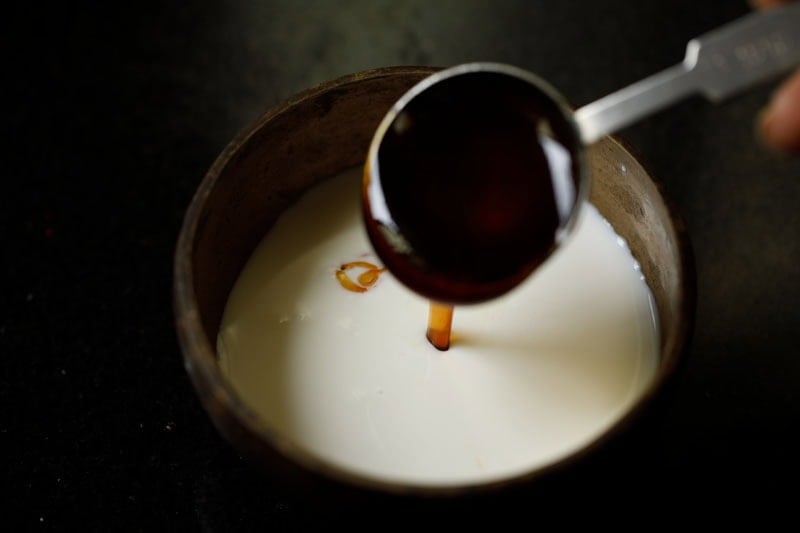
5. Add 1 tablespoon jaggery powder or grated jaggery. Stir well so that the jaggery dissolves completely.
Tip: You can use unrefined cane sugar instead of jaggery. Avoid using white sugar.
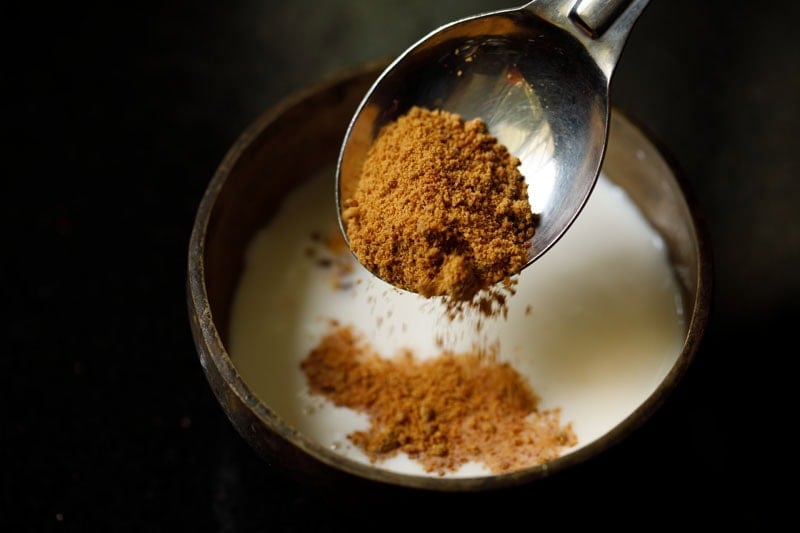
6. Add 1 to 2 teaspoons ghee (clarified butter) and mix again.
Tip: Cow’s ghee is traditionally preferred for its purity and aroma.
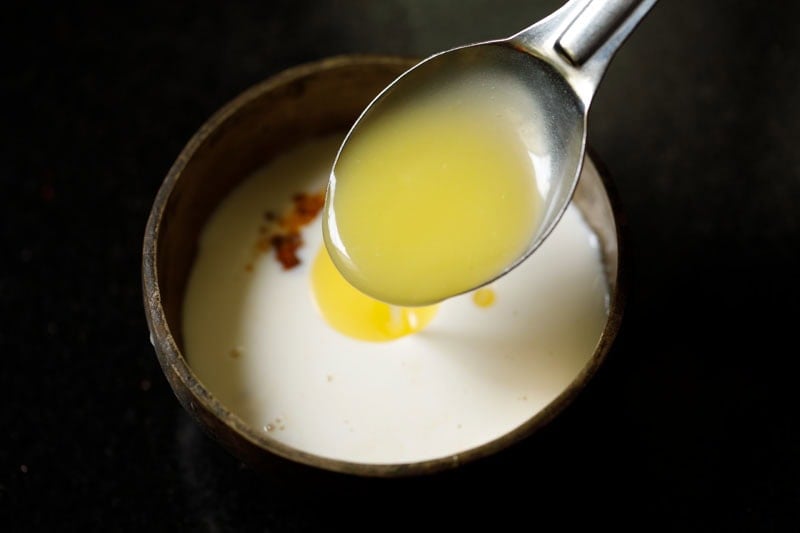
7. Lastly, add 3 teaspoons Ganga Jal (holy water).
If you don’t have Ganga Jal, simply skip it. The Panchamrut will still be sacred and suitable for puja.
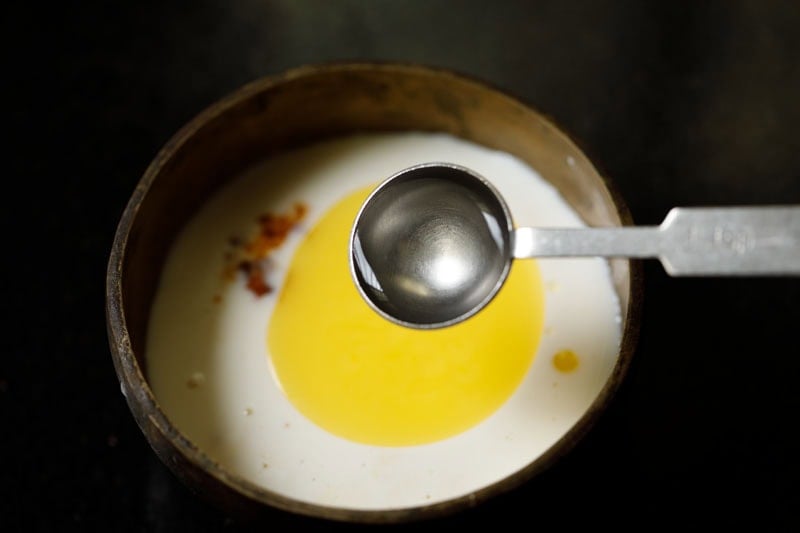
8. Stir and mix everything very well so that the ingredients blend and the jaggery dissolves.
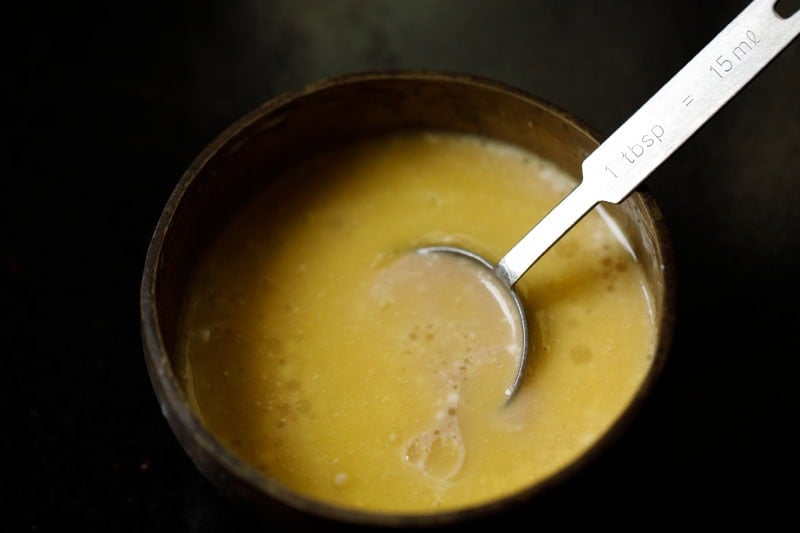
9. Add a few Tulsi (holy basil) leaves before offering.
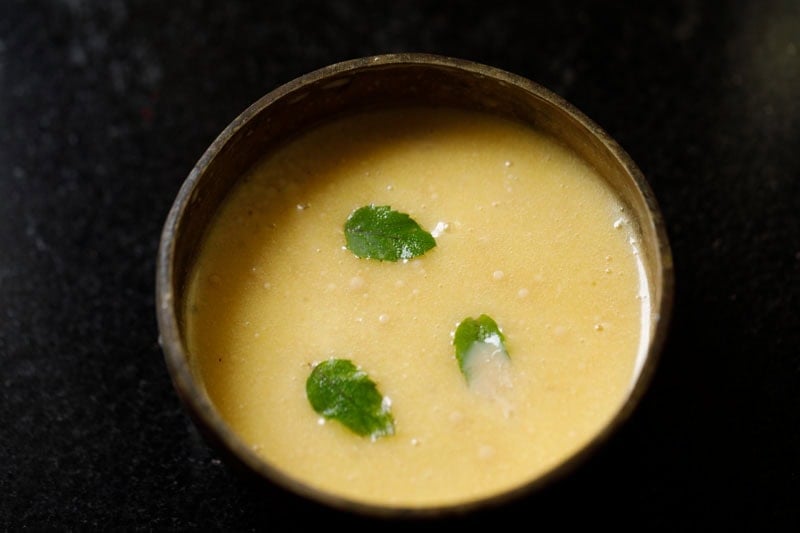
10. Panchamrut is now ready to offer to the deities.
After the pooja, havan, or abhishekam, distribute the Panchamrut as prasad. You can give about ¼ to ½ teaspoon to each person.
If making it for the family and not for any pooja or ritual, you can refrigerate the mixture for about a day.
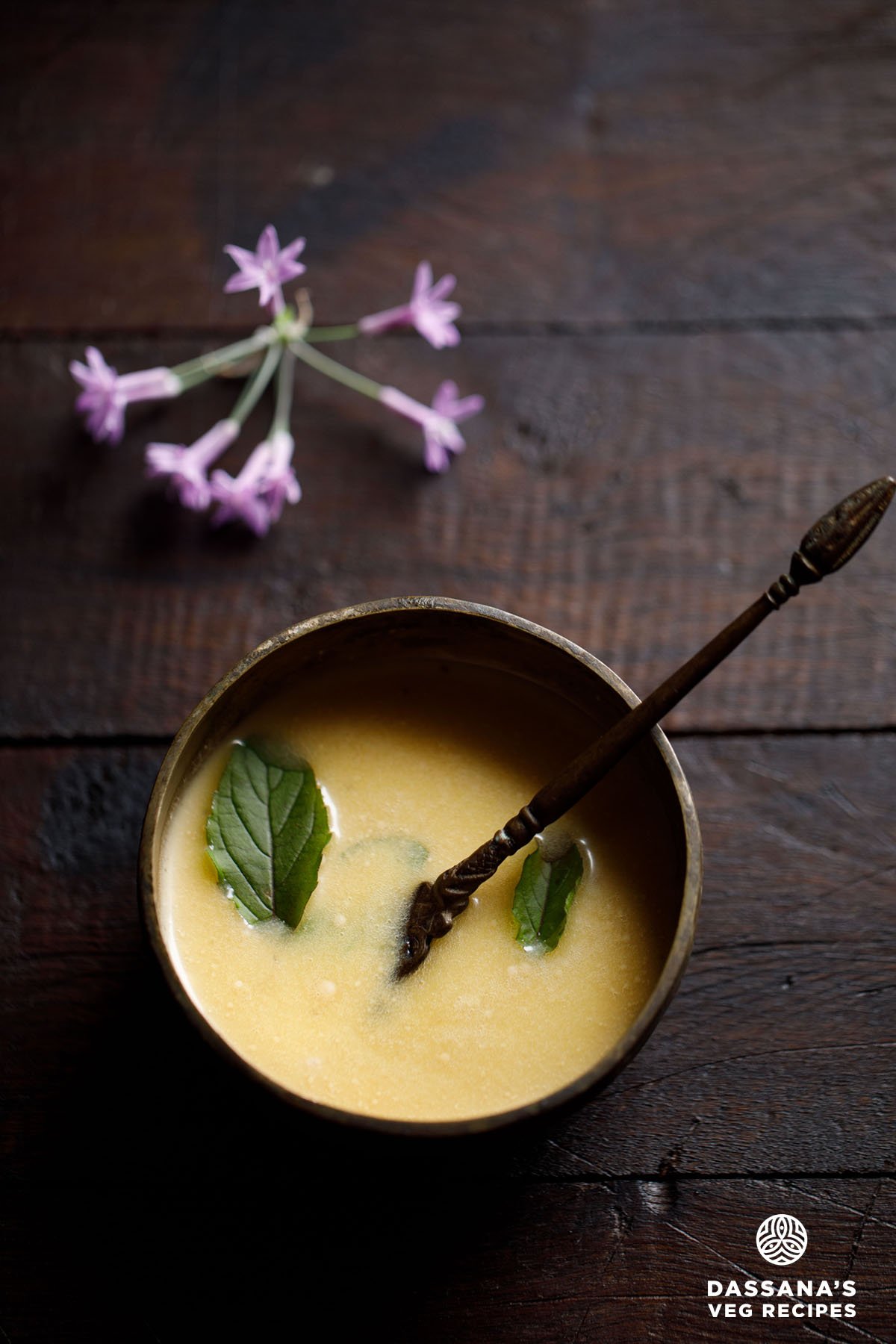
Serving Suggestions
Serve Panchamrut fresh as prasad or naivedyam after pooja. You can also add a small piece of banana, dry fruits, nuts or makhana if you’ve tasted that version in temples.
Always use clean utensils when preparing it for offering. Panchamrut can be prepared in brass or silver bowls, as both metals are considered pure and auspicious for puja.
Avoid using plastic or aluminum utensils and keep the bowl reserved only for religious use.
Storage Notes
It is best to make Panchamrut fresh for any pooja or ritual. It does not keep well for long, so consume it within 1 to 2 hours after the pooja. Prepare a fresh batch each time whenever possible.
South Indian Panchamrutham Recipe
In South India, the Panchamrut is known as Panchamrutham and is slightly different from the North Indian version. It is more fruit-based and commonly offered in temples, especially in Tamil Nadu and Kerala.
It is thicker, sweeter, and often made with ripe bananas and dry fruits.
Simple Panchamrutham Recipe
- 2 ripe bananas (chopped)
- 2 tablespoons grated jaggery
- 1 tablespoon honey
- 1 tablespoon ghee
- 2 to 4 tablespoons milk, as needed
- A few raisins, chopped dates, and cardamom powder (optional)
Mash the bananas, mix everything, and offer it immediately to the deity.
Expert Tips
- Use fresh ingredients: Always use fresh milk, curd, and ghee. Avoid sour curd or milk with any odor as Panchamrut is prepared for puja.
- Use cow’s milk, not buffalo milk: Cow’s milk is considered pure and satvik in Hindu rituals. It has a lighter texture and blends well with curd, ghee, and honey. Avoid buffalo milk, as it is heavier and not traditionally used for offerings.
- Cool the milk: Make sure the milk is at room temperature before adding honey. Mixing honey into hot milk is not recommended in Ayurveda.
- Prefer jaggery: Jaggery gives a natural earthy sweetness and light golden color. If using sugar, choose unbleached or unrefined sugar only.
- Use cow’s ghee: Cow’s ghee is considered sacred and pure for religious offerings. It also adds a pleasant aroma to the Panchamrut.
- Make fresh for puja: Panchamrut is best made fresh before the puja. If making for daily use, refrigerate and finish within a day.
FAQs
Can I use sugar instead of jaggery?
Yes. You can use unrefined or raw sugar instead of jaggery. Avoid white sugar as it is processed and lacks purity.
What if I don’t have Ganga Jal?
You can skip it. Panchamrut will still be sacred and suitable for offering. If you wish, you can use filtered water instead.
Can I add fruits to Panchamrut?
Traditionally, North Indian Panchamrut does not include fruits. But some temples add makhana, banana, coconut, raisins or nuts. If you prefer that version, add these before offering.
Step by Step Photo Guide Above
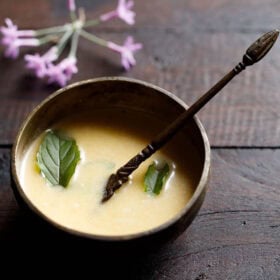
Panchamrut Recipe (Panchamrit)
Ingredients
Instructions
- In a small bowl, add the curd (yogurt) and whisk well until smooth.
- In another bowl, pour the milk. Use boiled milk that has been cooled to room temperature.
- Add the beaten curd to the milk and mix gently.
- Add honey and stir to combine.
- Add jaggery powder (or grated jaggery) and mix well so that it dissolves completely.
- Add ghee and combine everything well.
- Pour in Ganga jal. If unavailable, skip it or use filtered water.
- Stir the mixture well so all ingredients blend evenly.
- Add a few tulsi (holy basil) leaves.
- Offer the Panchamrut to the deities.
Notes
- Use fresh ingredients: Always use fresh milk and curd. Avoid sour curd or milk with any odor.
- Use pure milk and ghee: Use cow’s milk, curd and ghee for traditional authenticity and a light texture.
- Cool the milk: Ensure the milk is at room temperature before adding honey. Never mix honey with hot milk.
- Sweeteners: Jaggery adds earthy sweetness and color. Unrefined sugar or raw sugar can also be used.
- Make fresh: Panchamrut is best prepared just before puja.
- Adjust ingredients as needed: You can easily change the amount of any ingredient. Add less ghee if you prefer it lighter, or increase or reduce jaggery or curd to your taste.
- Scaling: This recipe makes a small batch. After offering to the deities, this quantity is enough for a small family of 2 to 4 people, as Panchamrut is taken only in spoonfuls as prasad. The recipe can be scaled up easily for more servings.

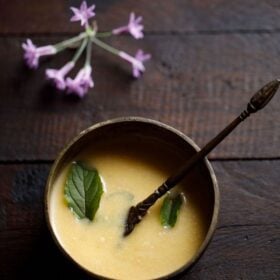
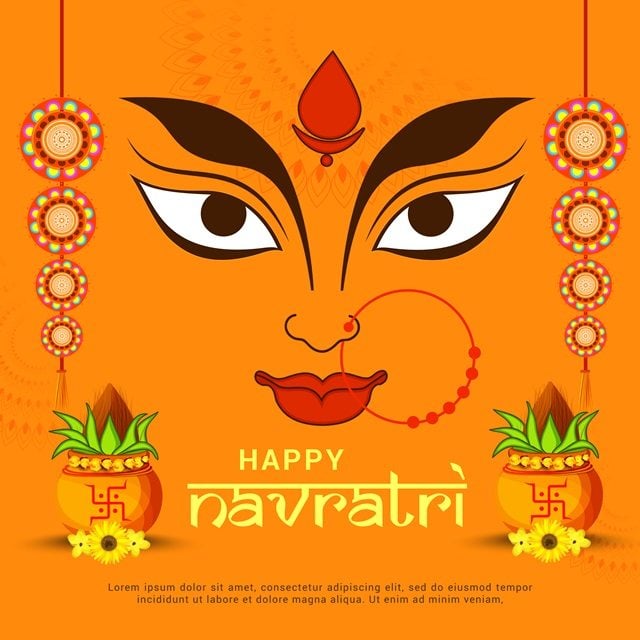
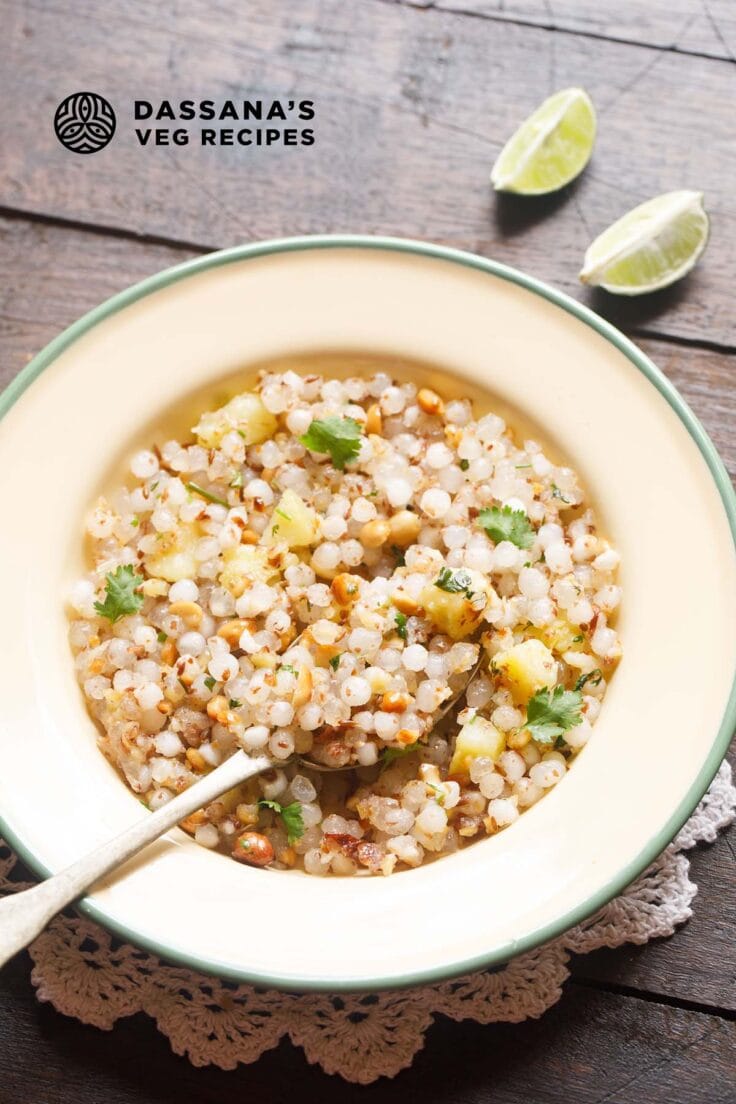
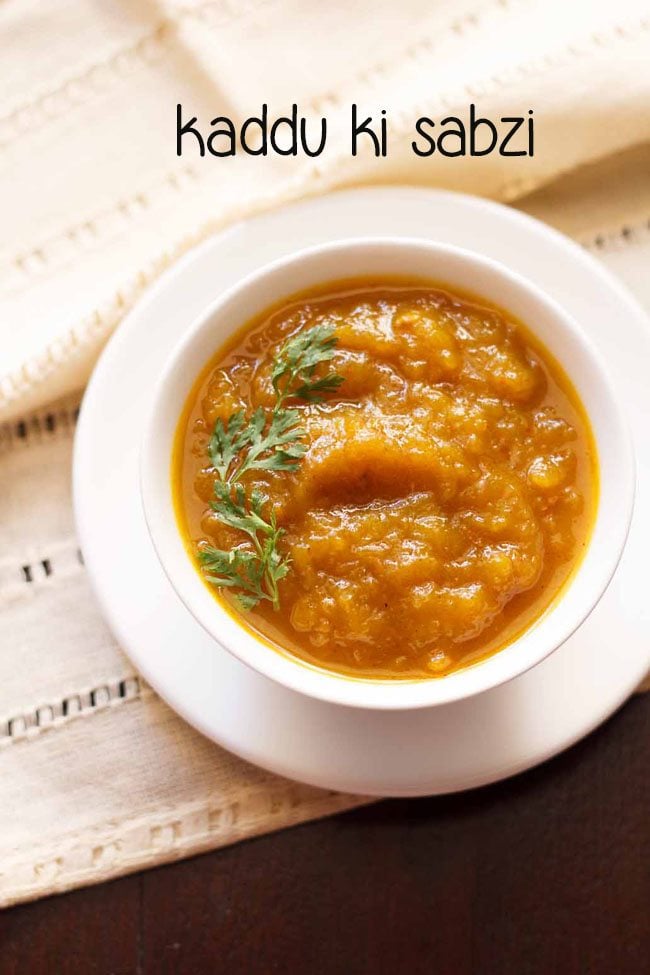
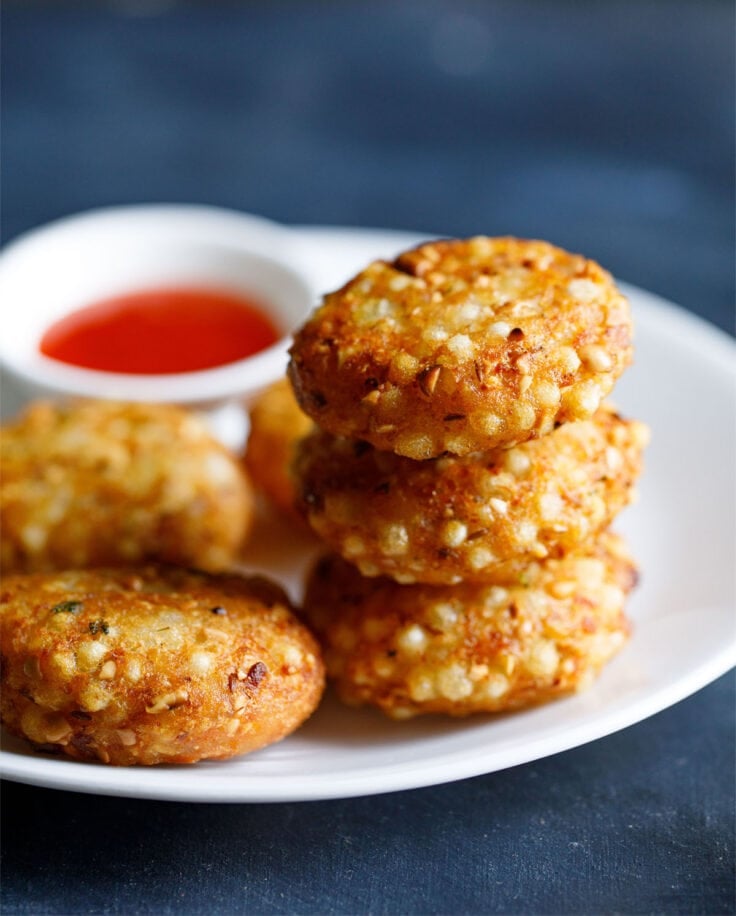
Thanks for sharing this method. Easy and doable.
Glad you found it easy to make. Panchamrit is such a simple yet meaningful recipe to prepare. Thanks for trying it.